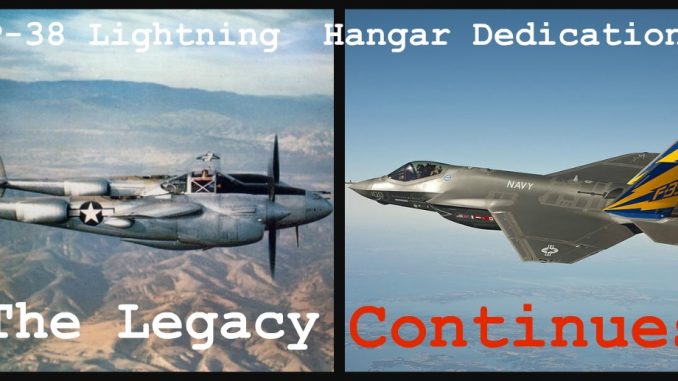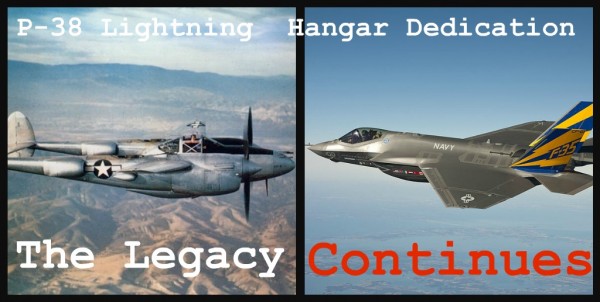

Officials from Lockheed Martin dedicated a hangar to the people who built, flew and maintained the aircraft. The hangar is now home to the F-35 Lightning II, which is nicknamed after the P-38 and is assembled at the Fort Worth plant. With a shiny new F-35 as a backdrop for the ceremony, officials unveiled an artist’s rendering of the mural they plan to paint on the building’s exterior. It will feature the motto “P-38 Lightning Hangar: The Legacy Continues.”
The P-38 with the twin booms earned the by the Nazis as a “fork-tailed devil”, the aircraft could be a dive bomber, a ground attacker or a long-range escort. Today, the F-35 Lightning II is a modern marvel of a machine, with immense technology and stealth capability, Lockheed Martin test pilot Bill Gigliotti said.
James Cooke, 88, of Arlington was stationed at Foggia, Italy, during World War II. He worked on a P-38 ground crew.
“In the morning, we would reload the machine guns, reload the cannon and get it clean,” said Cooke, who got an engineering degree at the University of Oklahoma after the war and worked on aircraft as a civilian at General Dynamics, which became Lockheed Martin in Fort Worth. “Then we would get up at 11 o’clock at night and load bombs on the P-38.”
Don Luttrell, 90, of Dallas flew 55 combat missions in support of the invasion of southern France. He said he brought down five enemy aircraft, although he was only credited with two. He received the Distinguised Flying Cross, an Air Medal with seven Oak Leaf Clusters and the European Service Medal with five stars for his service with the 49th Fighter Squadron.
The P-38 was versatile and reliable, he said.
“It worked very well,” he said. “You could put the guns out of the nose, put glass in it and put a bombsight in it.”



I read an article in aviation history magazine on the p-38 and it stated that you had to do several things before you got combat ready would you say the p-38 was hard to fly?
I don’t know who to direct this note to…but my wife’s 103 year old Uncle Merle Pearson is about to receive his forever wings any day now. He flew P-38 in the south Pacific..his first one nicknamed Pauline which was destroyed by a grenade in a ground attack. Then there was Pauline II which he flew till returning home. Not sure how many planes he was credited with shooting down…I do think it was 3.5 though. He did mention many a staffing run on enemy targets. He is an kind honorable Christian man that will be missed. Wish I had more information to relate but may get more information later.
Bless all the Hero’s that served.
Many thanks for writing in Mike. I’m sorry to hear about your wife’s uncle… mind you, we should all be so lucky to reach such a grand age. In looking him up on the net, it appears that he flew in the 431st Fighter Squadron of the 475th Fighter Group. The 475th’s official website lists one of the P-38’s he flew as having the serial number 44-24842, a P-38L. On the Pacific Wrecks website, this aircraft, with another pilot at the controls, ran out of fuel following a heavy combat engagement with Japanese fighters (shooting down two of them). It apparently bellied in on Cabugan Grande Island in the Philippines. Whether it still rests there today is doubtful, but you never know. Anyway, I hope your uncle in-law makes it through his last days peacefully. Please take care. All the best, Richard